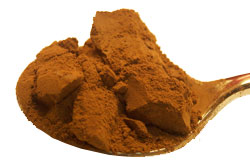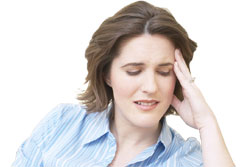- What is caffeine?
- Which foods contain caffeine?
- How much caffeine do individuals consume?
- How much caffeine is it safe to consume?
- Metabolic and other affects of caffeine
- Caffeine addiction
- Caffeine withdrawal
What is caffeine?

Caffeine is one of a group of drugs called methylxanthines, which have several effects on the body:
- They stimulate the central nervous system;
- They increase the frequency of urination (are diuretics);
- They stimulate the heart muscle; and
- They increase smooth muscle relaxation, which affects body systems regulated by smooth muscles, including the endothelial system which regulates blood flow.
Caffeine is the most commonly consumed psychoactive (affecting the mind or moods) drug globally and the consumption of natural caffeine has a long history. Coffee has been consumed in Arabia since the 13th century and tea has been consumed in China for several thousand years.
Which foods contain caffeine?

Synthetically produced caffeine is a component of many common medications, including cold and flu, appetite suppressing and pain relieving (analgesic) medications.
However, it is important to note that not all the caffeine contained in a product is necessarily detailed in the ingredient list. If caffeine occurs naturally in an ingredient of the product (e.g. guarana) the ingredient may be listed but not the caffeine it contains. Only if synthetically produced caffeine is added will it appear on the ingredients list as caffeine. In addition, caffeine can be removed from foods in which it is naturally found through a process known as decaffeination, for example with decaffeinated coffee and tea.
How much caffeine do individuals consume?
Globally, the average caffeine intake per person is 70mg per day (approximately equivalent to the amount of caffeine contained in one cup of instant coffee). However, individuals in developed countries consume more caffeine. In the United States, individuals consume on average 200mg (1-1.5 cups of coffee brewed from coffee beans) of caffeine per day.
In Australia, research conducted in the 1980s indicated that average per capita caffeine consumption is 240mg per day (about two cups of coffee bean coffee per day). This equates to 2.8 kg of coffee and 5.8 kg of chocolate per person per year.
How much caffeine is it safe to consume?
The amount of caffeine which can be safely consumed varies between individuals. In Australia, health authorities recommend that adults consume no more than 600mg of caffeine per day. However, individuals who are sensitive to the effects of caffeine consumption, particularly pregnant and lactating women and children, should consume less caffeine.
[calc_caffeineintake]
Metabolic and other effects of caffeine
When a human consumes caffeine, the substance is absorbed, distributed and excreted in the urine very quickly. It does not accumulate in the bloodstream or body tissues. Following absorption, caffeine is directed to the brain where it stimulates the nervous system. It also stimulates the heart and increases smooth muscle relaxation. As smooth muscles regulate the flow of blood through the body, this can affect an individual’s blood flow.
Caffeine is metabolised by the liver and is typically excreted in urine within several hours of consumption. While it remains in the body caffeine increases the release of free fatty acids stored in fatty tissues. It also affects the kidneys, which causes increased urination which may in turn cause an individual to become dehydrated.
Caffeine addiction
Caffeine is an addictive substance. Following regular consumption of as little as 350mg of caffeine per day (within the recommended safe limits, equivalent to roughly three cups of coffee bean coffee) an individual may become dependent on caffeine. Caffeine addiction can be physical or psychological and varies in severity. Some addicted individuals will be mildly dependent on caffeine while others will compulsively consume caffeine.
Individuals who are addicted to caffeine may experience withdrawal symptoms if they stop consuming caffeine. Individuals who consume large amounts of caffeine and wish to reduce their consumption, should therefore reduce caffeine consumption gradually, for example by substituting one caffeinated drink per day with a non-caffeinated beverage.
Caffeine withdrawal

Symptoms of caffeine withdrawal include:
- Headaches, which are the key symptom of caffeine withdrawal;
- Drowsiness;
- Irritability;
- Nausea; and/or
- Vomiting.
More information
 |
For more information on caffeine, including consumption by adults, children and pregnant women, as well as some useful tools, see Caffeine. |
 |
For more information on nutrition, including information on types and composition of food, nutrition and people, conditions related to nutrition, and diets and recipes, as well as some useful videos and tools, see Nutrition. |
References
- National Institutes of Health. Caffeine in the diet. 2009. [cited 2010, June 23]. Available from: http://www.nlm.nih.gov/medlineplus/ency/article/002445.htm
- Winston AP, Hardwick E, Jaberi N, Neuropsychiatric effects of caffeine. Advances Psychiatric Treat. 2005; 11: 432-9.
- National Institutes of Health. Caffeine. 2010. [cited 2010, June 23]. Available from: http://www.nlm.nih.gov/medlineplus/caffeine.html
- Australian Drug Foundation. Caffeine- fact sheet. 2003. [cited 2010, July 2]. Available from: http://www.druginfo.adf.org.au/druginfo/fact_sheets/caffeine/caffeine.html
- National Health and Medical Research Council. Dietary Guidelines for Australian Adults. 2003. [cited 2010, June 23]. Available from: http://www.nhmrc.gov.au/publications/synopses/dietsyn.htm
- Health Canada. Caffeine. 2010. [cited 2010, June 23]. Available from: http://www.hc-sc.gc.ca/hl-vs/iyh-vsv/food-aliment/caffeine-eng.php
- National Drug and Alcohol Research Centre- University of New South Wales. Caffeine- fact sheet. 2001. [cited 2010, June 30]. Available from: http://ndarc.med.unsw.edu.au/NDARCWeb.nsf/resources/NDARCFact_Drugs6/$file/caffeine+fact+sheet.pdf
- NSW Health. Caffeine- fact sheet. 2007. [cited 2010, June 29]. Available from: http://www.health.nsw.gov.au/factsheets/drugandalcohol/caffeine.html
- American Heart Association. Recommendations- Caffeine. 2010. [cited 2010, June 23]. Available from: http://www.americanheart.org/presenter.jhtml?identifier=4445
All content and media on the HealthEngine Blog is created and published online for informational purposes only. It is not intended to be a substitute for professional medical advice and should not be relied on as health or personal advice. Always seek the guidance of your doctor or other qualified health professional with any questions you may have regarding your health or a medical condition. Never disregard the advice of a medical professional, or delay in seeking it because of something you have read on this Website. If you think you may have a medical emergency, call your doctor, go to the nearest hospital emergency department, or call the emergency services immediately.







